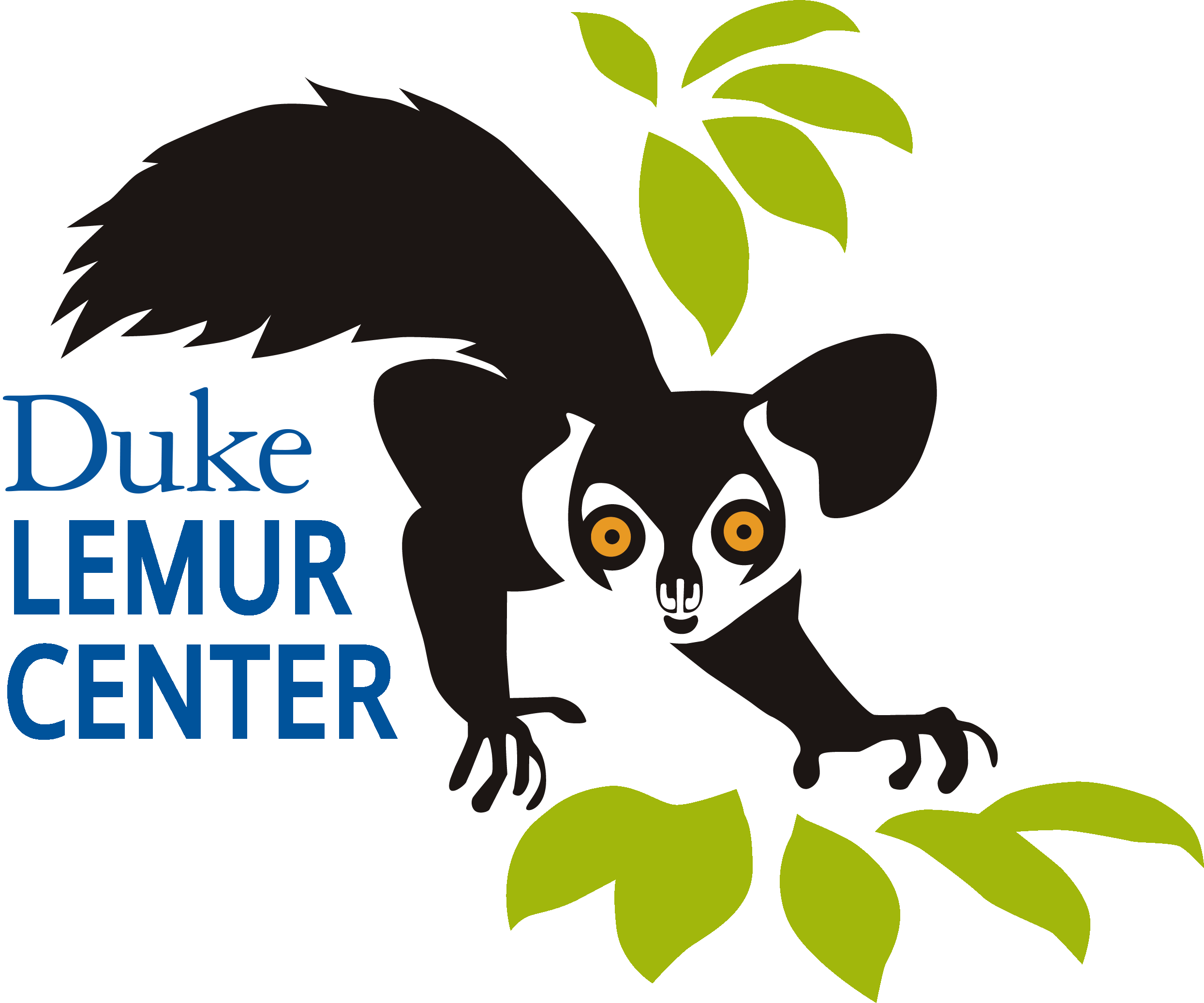For many in Madagascar, the new year brings many opportunities for landscape restoration. January is usually a perfect time because the rainy season has begun, providing natural irrigation for the trees. All over the island, different partners and organizations host big reforestation events, sometimes with thousands of people planting tens of thousands of trees. At Duke Lemur Center SAVA Conservation, we coordinate our activities with diverse actors, leading our own initiatives and contributing to many more. This year, our goal is to bring together diverse actors to plant trees and develop action plans with our partners for long-term management.

Landscape restoration specialist Zico manages our reforestation projects.
Planting trees can be easy; doing it well is not. We started preparing in March 2024, stocking tree nurseries to produce high quality seedlings of diverse species. At one of our dozen tree nurseries, over 22,000 trees from 25 species have been grown with meticulous care, and smaller community-led nurseries produce 3,000+ each. Since November, we’ve been planning and preparing for the 2025 campaign. Every waking moment of January was dedicated to organizing, preparing, and realizing our goals. It is no exaggeration to say it was a military effort!

Taking care of our 22,000 seedlings is a community effort.
Beginning with Andranotsara (the place with the good water named for its natural springs), we organized local leaders and community members to clear brush and dig holes. This site is challenging because it is a coastal forest, with hot sandy soils. To give the seedlings a fighting chance, we also amended the planting pits with compost and dug the holes in advance of rain storms so that they would be well watered. Over 60 participants arrived and planted 3,000 native trees in a matter of hours. The event was attended by local government authorities and the regional Director of the Ministry of Environment. A journalist from the TV news station covered the story, spreading our message to broad audiences. It was an excellent kick-off to the new year.
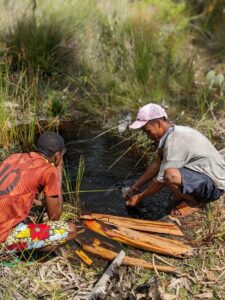
The good water, which comes from the forest watershed.
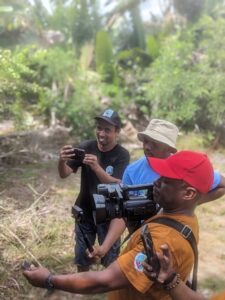
Multi-media team for broader outreach.
Next, we prepared ourselves for a bigger event with our partners in the military. The government gave the military over 250 acres of land to use for their training as well as for agriculture, and the military decided to dedicate much of this land to reforestation. Since 2019, we’ve worked with the military to plant and maintain trees, create and manage a tree nursery, and coordinate with the local community near the base. During this event, over 4,000 trees were planted on around 5 acres in just one morning. This brings our total up to 65,000 trees planted with the military! While we enjoyed a picnic lunch with the participants, we discussed new initiatives to expand our efforts, like implementing new agriculture and animal husbandry projects that can improve the environment, yields, and income.
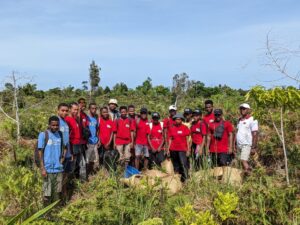
Our DLC-SAVA Conservation Reforestation Team hard at work.
Our biggest restoration project is the sacred mountain of Ambanitaza. This mountain was once covered in rainforest filled with wildlife. Over use, frequent cyclones, and several wildfires left over 250 acres of this mountain top almost entirely deforested. Since 2020, we’ve worked with the six communities that surround and depend on the mountain to protect and restore the forest. In addition to planting native forest trees to restore forests, we develop the capacity of communities to produce fruit and clove trees so farmers can earn income from the trees they plant on their farms. Farmers receive training and hands-on assistance to regenerate their land. Our goal this year is to plant over 22,000 seedlings on the summit, and on the first of February, we planted over 8,000 in one morning. A cook-out and picnic for the 250 participants who attended was followed by speeches of thanks and encouragement. Dark storm clouds rolled in, sending us scrambling down the mountain, proud of our work and excited for more. We returned on February 15 and March 1 to plant another 5,000 and we will continue throughout the year.
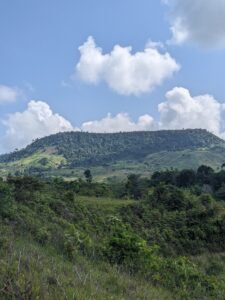
The sacred mountain of Ambanitaza.
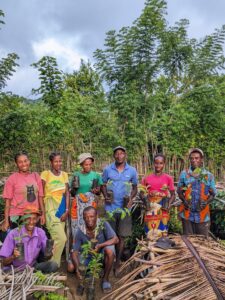
Over 200 participants received more than 12,000 seedlings to plant on their own farms.
January was just the beginning. This year, we plan to plant over 100,000 trees on more than 300 acres with partner communities totaling over 1,000 beneficiaries. Beyond tree planting, we’re coordinating actions to ensure the long-term maintenance of the restoration sites; for example, trees must be watered and weeded. Most importantly, land ownership in the restoration zones needs to be secured and protected from fire, cattle grazing, and unauthorized harvesting. Actors and interest groups at multiple scales benefit from aligning their goals and coordinating their activities, so we organize working group sessions and planning meetings to constantly assess our strategies together. Through these efforts, we are confident we can achieve our objectives.
This work is supported by funding from the General Mills and private donors. Our research on restoration is funded by the Swiss National Science Foundation.
